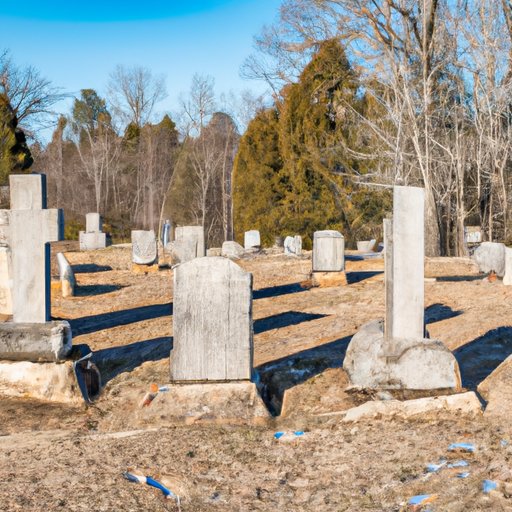
Introduction
Losing a loved one is one of the most difficult experiences anyone can go through. And the pain can be compounded by the inability to locate their final resting place. Whether you’re trying to visit a long-lost family member’s grave or simply looking to pay your respects, finding where someone is buried can be a challenging and frustrating endeavor. Fortunately, there are various resources available to help you locate a gravesite. In this article, we’ll explore several different avenues you can pursue to find where someone is buried for free.
Utilizing Online Grave Locator Tools
One of the easiest and most efficient ways to locate a gravesite is by using an online grave locator tool. These websites typically allow you to enter the person’s name and the state in which they were buried to generate a list of potential matches. Some examples of popular online grave locator tools include Find a Grave, BillionGraves, and Interment.net.
To use these tools, simply go to the website and enter the person’s name and state. The more specific information you can provide, such as their birth and death dates or the cemetery they were buried in, the more accurate the results will be. Once you’ve entered the information, you should be provided with a list of potential matches. Click on each result to view more information, including the person’s date of birth and death, the cemetery name and location, and any photos or additional details that have been uploaded.
Researching Local Cemetery Listings
If you’re unable to find the information you need through online grave locator tools, your next step should be to check with local government agencies for burial location listings. This could include contacting county clerks, historical societies, or even the local health department. Many of these agencies maintain records of burials within their jurisdiction and may be able to provide you with the information you need.
To obtain burial location information from these agencies, you will typically need to provide some basic information about the deceased, such as their name, date of birth, and date of death. Some agencies may charge a fee for this service, so be sure to ask about any associated costs before submitting your request.
Contacting Funeral Homes
Funeral homes are another resource that may be able to provide you with information on burial locations. If the funeral home you’re inquiring about was responsible for organizing the deceased’s funeral, they may have records of where the person was buried.
To contact a funeral home, you can typically find their contact information online or in a local directory. When you call, be sure to explain your situation and provide the person on the other end with as much information as you can about the deceased. They may ask you for additional information, such as the date of the funeral or the name of the cemetery, in order to assist you more effectively.
Searching Through Church Records
Historical church records can also be helpful in locating burial locations. If the person you’re looking for was buried on church property, there may be records of the burial in the church’s archives.
To access church records, you will need to contact the church directly. Many churches have websites that include contact information, or you can simply call the church office. When you contact the church, explain your situation and ask if they have any records of the burial. Be prepared to provide the person on the other end with as much information as you can about the deceased to help them in their search.
Contacting Veterans Affairs
If the person you’re looking for was a veteran, the U.S. Department of Veterans Affairs may also be able to provide you with information on their burial location. The VA maintains a database of all veterans buried in national cemeteries, as well as some state and tribal cemeteries.
To access this information, you will need to contact the VA’s National Cemetery Administration. You can find their contact information on the VA website or by calling their toll-free number. When you call, explain that you’re looking for information on a veteran’s burial location and provide the person on the other end with the deceased’s full name and any other information you have, such as their date of birth or service-related information.
Utilizing Social Media Platforms
Social media platforms can also be a helpful resource for finding lost graves. There are several online communities dedicated to helping people locate burial sites, such as the Find a Grave Community on Facebook. These groups allow members to post information about the person they’re searching for and often receive help from other members who have experience locating gravesites.
You can also use social media platforms to organize your own group of online volunteers to help you search for a gravesite. Simply post information about the person you’re searching for on your personal social media accounts and ask friends and family members to share it with their own networks. With enough shares and awareness, you may be able to locate the gravesite you’re looking for.
Conclusion
Locating a gravesite can be a difficult and emotional process, but there are several resources available to help you find the information you need. By utilizing online grave locator tools, checking with local government agencies, contacting funeral homes, searching through church records, contacting veterans affairs, and utilizing social media platforms, you can increase your chances of finding where someone is buried for free. Don’t be afraid to reach out for help and support during this process, and remember that the final resting place of your loved one is a place of peace and reflection.





